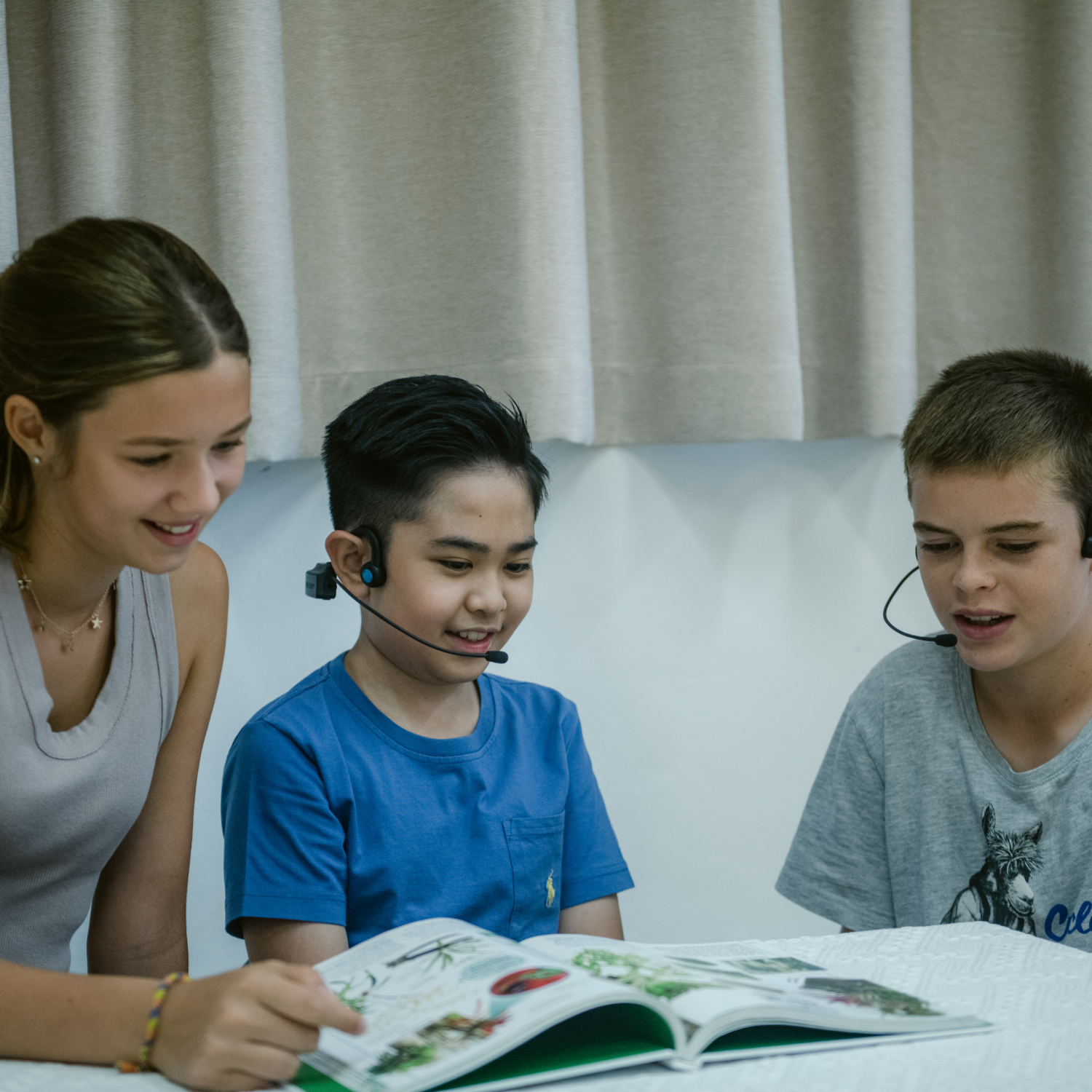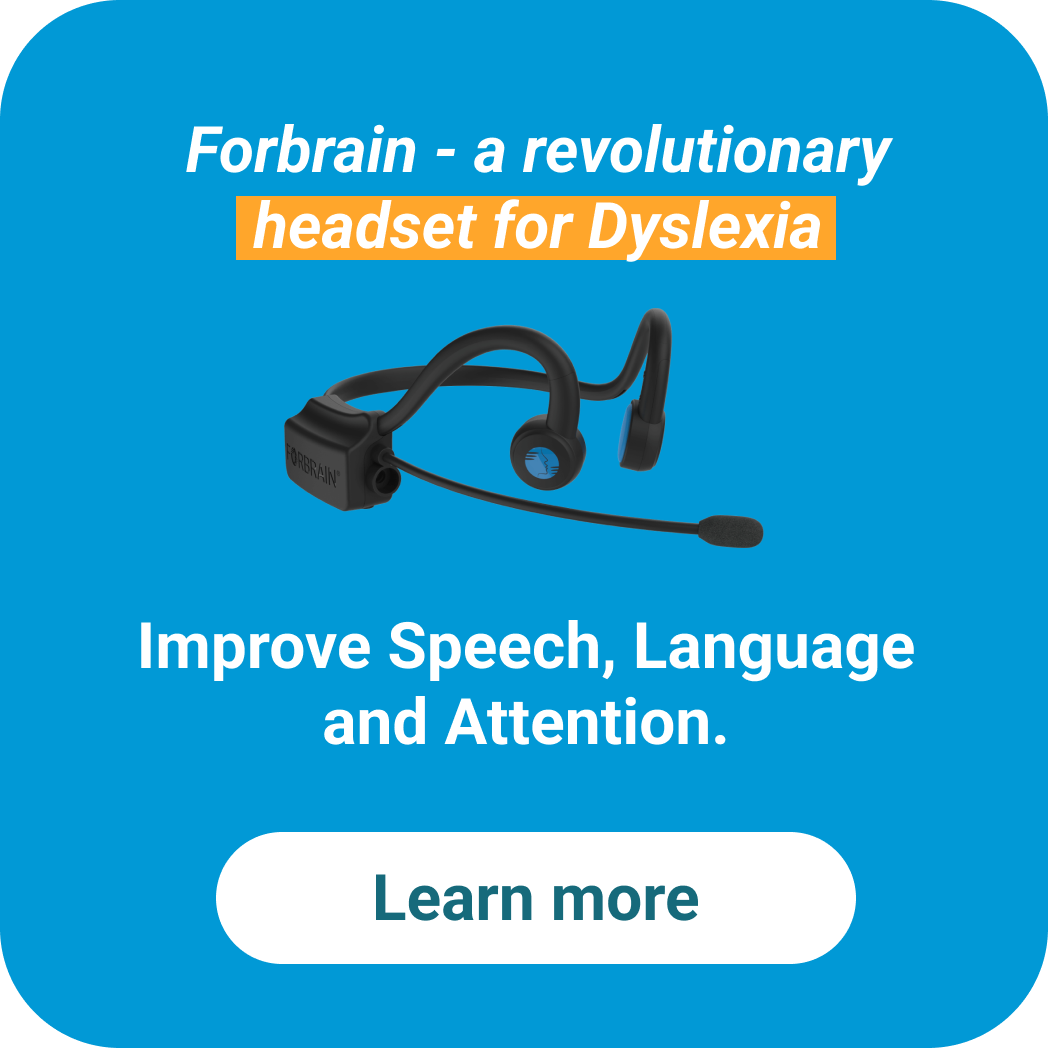Dyslexia Treatment: Effective Strategies and Tips
 Amanda Unrau
Amanda Unrau CCC-SLP
June 05, 2024

It should be noted that there is no cure for dyslexia and it cannot be treated. However, certain interventions and strategies can help, but not cure, dyslexia. This article will share some tips and support ideas that can help lessen the impact of dyslexia.
How is dyslexia treated? Interventions for dyslexia should focus on letter knowledge, phonological awareness (the awareness of sounds and syllables in words), morphological awareness (the recognition and use of word parts that carry meaning), sound-symbol correspondence, sight word recognition, decoding, reading fluency, spelling, and vocabulary.
Educational Interventions
Educational interventions for dyslexia can help improve reading, writing, and spelling skills. These interventions should be taught in the functional context of language as they seek to address the underlying deficits of dyslexia. Dyslexia interventions aim to improve spoken and written language and communication as they relate to the general education curriculum and content standards. These interventions may be implemented in the school setting, in the home, or in other private settings.
Below are examples of educational interventions:
Specific Dyslexia Programs
There are multiple programs for treating dyslexia that consist of a specific treatment protocol and require professionals who implement these programs to be trained and certified in the specific treatment strategy. Several examples include Lindamood Phoneme Sequencing, Orton-Gillingham (OG), Self-Regulated Strategy Development (SRSD), and SPELL-Links to Reading & Writing. These programs often teach a variety of skills, such as phonological or phonemic awareness, vocabulary, reading fluency, reading comprehension, decoding, and spelling. Each program has slightly different goals, such as developing fluent readers and spellers, or developing comprehension strategies. Many of these utilize multisensory approaches, such as visual, auditory, and kinesthetic-tactile methods.Be sure to consult with a professional to help you choose the program that would best fit the needs of the individual.
Read-Aloud Interventions
Interventions such as Dialogic Reading and Repeated Reading are used to improve literacy and reading fluency. These both involve a child reading aloud, either taking turns reading back and forth with a teacher, or reading next to a teacher who provides help as needed. Other methods to improve oral reading fluency include echo reading (where the student reads while listening), choral reading (where students read aloud as a group), and neurological impress or shadowing (where a fluent reader and a weak reader read aloud together).
Teaching Story Grammar
Teaching story grammar is a way to help students become familiar with the major components of narrative stories, such as the setting, characters, problem, and solution. This helps students understand how stories are set up, which enables them to make predictions as they read. Visuals or manipulatives may be used to represent each component of the story. Students are taught both the microstructure and the macrostructure of stories. Microstructure consists of sentence structure, and macrostructure consists of story grammar. The combination of these leads to a more in depth understanding of the structure and components of narratives, which helps students better read and understand stories.
Writing Lab Approach
The writing lab approach is implemented by speech pathologists in collaboration with general education and special education teachers. This technique supports literacy instruction through the use of computers. Students practice using the writing process of planning, organizing, revising, editing, publishing, and presenting. The growth of language skills is supported since instructional scaffolding is used to meet individual needs and curriculum goals.
IEPs
IEPs are individualized education programs set up for students who are entitled to receive special education services in the school setting. Students qualify for an IEP after an assessment and educational diagnosis. Students with dyslexia who have an IEP can receive support in the form of additional reading instruction, by working with a reading specialist, and/or by receiving services from a speech language pathologist. Specific goals are written and included in the IEP for each service area. IEPs can also include accommodations.
Educators and other professionals who implement these programs determine which treatment methods are most appropriate by considering the severity of dyslexia, language strengths and weaknesses, learning style, any additional factors related to language skills (e.g., hearing impairment, vision impairment, cognitive functioning), cultural background, and communication needs.
Assistive Technology
Technology can help with dyslexia by making certain tasks that are difficult for those with dyslexia easier to complete. Below are some examples of assistive technology.
Speech-to-text and text-to-speech tools
Speech-to-text and text-to-speech tools assist individuals with dyslexia in a variety of ways. This software can reduce or eliminate spelling errors, improve comprehension of material, and improve spoken language skills by exposing listeners to accurate speech and grammar.
Audiobooks
Audiobooks make it possible for students to listen to stories. This allows them to bypass the difficult task of decoding so that they can focus solely on comprehension. Audiobooks work best when paired with the written story so that students can follow along with the story as they listen.
Forbrain
Forbrain is an auditory stimulation headset that individuals with dyslexia can wear to help improve their reading fluency and memory recall. Forbrain can be used during reading instruction or while receiving therapy services to improve reading and communication skills. An explanation of how Forbrain works is given in the below section entitled “Using Forbrain to Help with Dyslexia.”
Mind mapping
Mind mapping is a visual tool that shows thoughts connected to a central idea. Visual learning strategies can be highly effective for individuals with dyslexia and can help them remember information more effectively than with plain text. Mind maps are a great way to present information and ideas using words, colors, and imagery. They can help with planning, organization, note-taking, and studying.
Accommodations and Support
In addition to therapy for dyslexia, accommodations and support are available to those with dyslexia in the educational setting and other settings. These accommodations are ways to support individuals with dyslexia and make certain tasks easier. They may include accommodations to the learning environment, or some type of visual or auditory support. Support is also available to help individuals and families cope with the implications of living with dyslexia. Any of these can be used in addition to dyslexia treatment.
Below are some examples of accommodations and support for individuals with dyslexia:
Classroom support
Graphic organizers, also known as knowledge maps or concept diagrams, are ways of visually organizing information. They can be used to show the relationship between vocabulary, facts, ideas, etc. Some examples include comparison-contrast maps (Venn diagrams), problem-solution maps, and cause-effect maps. Graphic organizers assist reading comprehension and writing by helping students take notes as they read, understand different genres of text, write descriptions, or organize ideas for writing essays.
Extended time and frequent breaks are accommodations that can be added to student IEPs. Students with dyslexia often need additional time to complete tests and assignments since reading difficulties can slow them down and not give them sufficient time to show what they understand. Students with dyslexia may also need more frequent breaks during class to help them stay focused.
Note-taking support, such as allowing students to receive teacher copies of the notes or work with a peer note-taker, helps students get all the necessary information during class lectures.
Social-Emotional Support
Besides having an educational impact, dyslexia can impact children emotionally and socially. An individual with dyslexia can struggle with their expressive language because of word-finding difficulties. This makes it hard for them to communicate with others or make and maintain friendships. Children with dyslexia may also have low self-esteem and a lack of confidence because they have to try so hard to learn to read.
Students with dyslexia may benefit from seeing a school counselor to talk about these difficulties. They may also be able to join a social skills group run by a school counselor or speech pathologist. Groups like these help children learn ways to communicate more effectively and allow them to practice these skills in a small structured setting. They may also be able to discuss their feelings more openly and relate to others with similar struggles.
Parental Involvement
Parental involvement is essential in supporting children with dyslexia, both academically and emotionally. Reading together regularly can be a simple yet effective way to help children practice their reading skills in a low-pressure setting. Alternating reading aloud and selecting engaging books keeps them motivated. Creating a quiet, dyslexia-friendly study space at home with visual aids and reminders also helps them focus and feel organized.
Staying connected with teachers and specialists allows parents to align support strategies between home and school, ensuring consistency and tracking progress. With the right involvement, parents can play a pivotal role in their child’s success, helping them navigate dyslexia with confidence and support.
More Interventions!
Computer-Based Options
There are several computer programs that help to improve phonological awareness, spelling, decoding, and vocabulary acquisition and development. These include both computer-based programs and apps for iPads and tablets. One of these such programs is WordQ, which can predict words while writing and use text-to-speech technology to allow students to hear their written sentences in order to identify mistakes. Read, Write, & Type teaches students phonics by pairing phonemes with finger strokes on the keyboard. This helps them learn keyboarding and word processing skills as well.
Considerations for Complex Communication Needs
Children with cognitive deficits, physical impairments, or hearing impairments may exhibit lower reading skills and may have more difficulty accessing dyslexia intervention programs. Other options must be considered in order to best support these learners. Ways to support these children include augmentative and alternative communication (AAC) devices, scribes to write down classroom instruction, and visual phonics or fingerspelling for children who are Deaf or Hard of Hearing (DHH). Visual phonics and fingerspelling are systems that teach specific hand shapes for phonemes and letters.
Where to Seek Help for Dyslexia Treatment
As a language disorder, treatment for dyslexia should include an interprofessional team. Members of this team can include a reading specialist, speech-language pathologist, occupational therapist, special education teacher and an ESL teacher. Since dyslexia impacts a student academically, most if not all of these professionals can be found in the school setting. If these professionals already work with the student with dyslexia, they will have a good idea of the student’s specific strengths and weaknesses. They can also complete any assessments needed to determine if a student qualifies for an IEP. Parents should reach out to one of these professionals with any questions or concerns.
Using Forbrain to Help with Dyslexia
Forbrain is an auditory stimulation headset that uses the principles of neuroplasticity to help the brain create new connections and rewire itself. Forbrain allows individuals to hear themselves speaking and the sounds they produce more clearly. It helps with verbal memory, phonological awareness, and verbal processing speed, all of which are challenges for individuals with dyslexia. In turn, it can improve sound discrimination, reading fluency, reading comprehension, verbal processing speech, spelling skills. Forbrain can be used in combination with other dyslexia treatments.
Final Words
Parents, educators, and healthcare professionals are all key players in the management of dyslexia. When looking for ways to support an individual with dyslexia, consider the dyslexia treatment methods described above. Navigating this process of the treatment of dyslexia can be challenging, so don’t hesitate to reach out to other professionals to help you decide which approach is the best fit.
References
ASHA. (Accessed 2024, May 10). Disorders of Reading and Writing. ASHA. https://www.asha.org/Practice-Portal/Clinical-Topics/Written-Language-Disorders/Disorders-of-Reading-and-Writing/
ASHA. (Accessed 2024, May 10). Written Language Disorders. ASHA. https://www.asha.org/practice-portal/clinical-topics/written-language-disorders/
Empower Child Learning. (Accessed 2024, May 14). Understanding IEP Accommodations for Dyslexia: A Comprehensive Guide. Empower Child Learning. https://www.empowerchildlearning.com/blog/understanding-iep-accommodations-for-dyslexia-a-comprehensive-guide
Forbrain. (Accessed 2024, May 14). Effective Boost in Dyslexia Therapy. Forbrain. https://dev.forbrain.com/dyslexia/
Martinelli, Katherine. (2023, October 30). Understanding Dyslexia. Child Mind Institute. https://childmind.org/article/understanding-dyslexia/
Mind Map. (2022, February 16). How Mind Mapping Can Help with Dyslexia. Mind Map. https://mind-map.com/how-mind-mapping-can-help-with-dyslexia/





